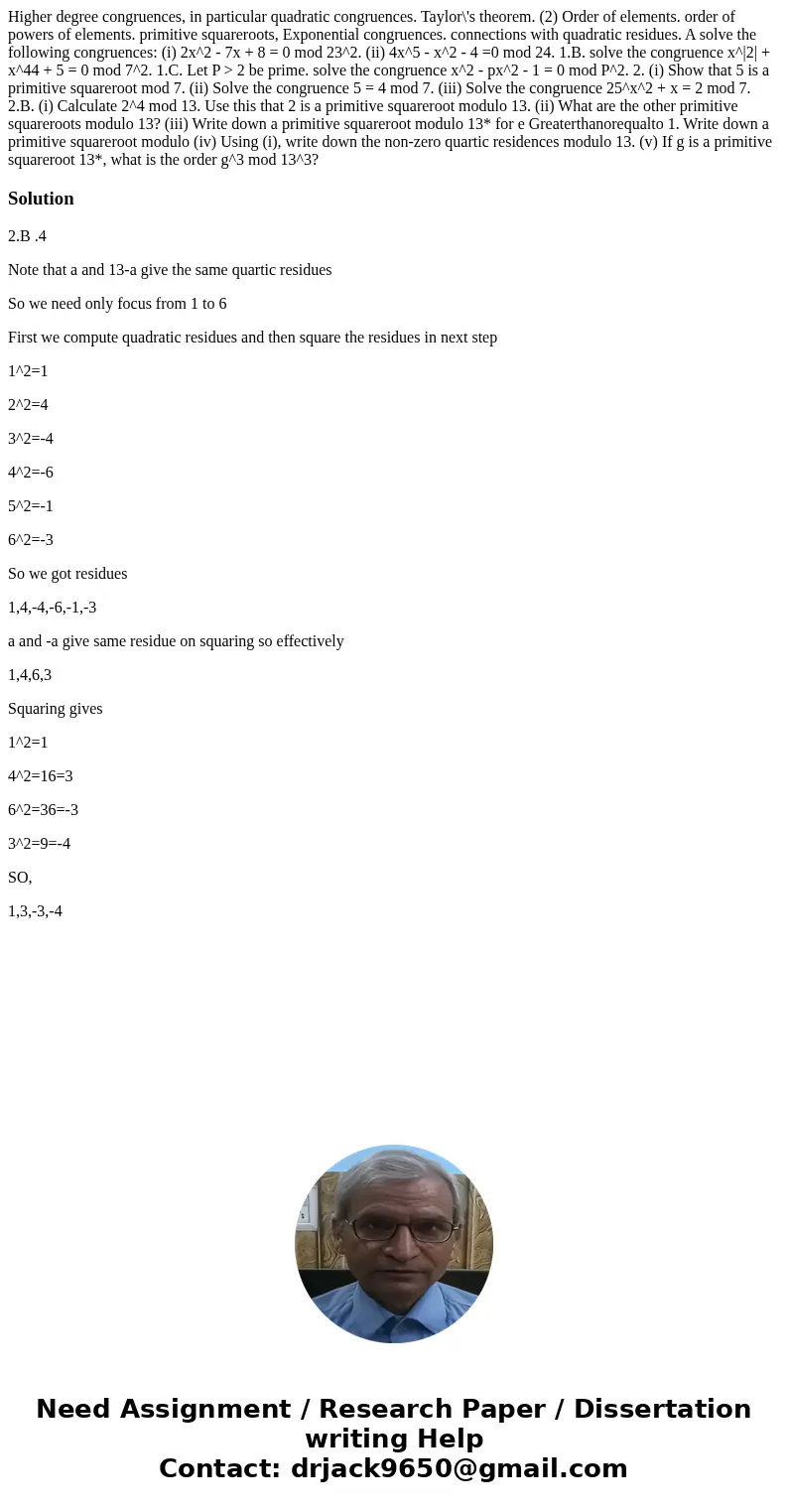Higher degree congruences in particular quadratic congruence
Higher degree congruences, in particular quadratic congruences. Taylor\'s theorem. (2) Order of elements. order of powers of elements. primitive squareroots, Exponential congruences. connections with quadratic residues. A solve the following congruences: (i) 2x^2 - 7x + 8 = 0 mod 23^2. (ii) 4x^5 - x^2 - 4 =0 mod 24. 1.B. solve the congruence x^|2| + x^44 + 5 = 0 mod 7^2. 1.C. Let P > 2 be prime. solve the congruence x^2 - px^2 - 1 = 0 mod P^2. 2. (i) Show that 5 is a primitive squareroot mod 7. (ii) Solve the congruence 5 = 4 mod 7. (iii) Solve the congruence 25^x^2 + x = 2 mod 7. 2.B. (i) Calculate 2^4 mod 13. Use this that 2 is a primitive squareroot modulo 13. (ii) What are the other primitive squareroots modulo 13? (iii) Write down a primitive squareroot modulo 13* for e Greaterthanorequalto 1. Write down a primitive squareroot modulo (iv) Using (i), write down the non-zero quartic residences modulo 13. (v) If g is a primitive squareroot 13*, what is the order g^3 mod 13^3?
Solution
2.B .4
Note that a and 13-a give the same quartic residues
So we need only focus from 1 to 6
First we compute quadratic residues and then square the residues in next step
1^2=1
2^2=4
3^2=-4
4^2=-6
5^2=-1
6^2=-3
So we got residues
1,4,-4,-6,-1,-3
a and -a give same residue on squaring so effectively
1,4,6,3
Squaring gives
1^2=1
4^2=16=3
6^2=36=-3
3^2=9=-4
SO,
1,3,-3,-4

 Homework Sourse
Homework Sourse